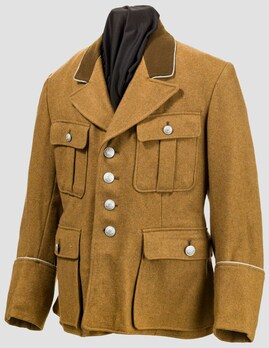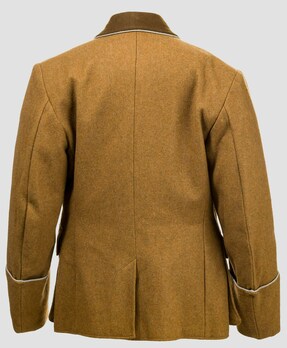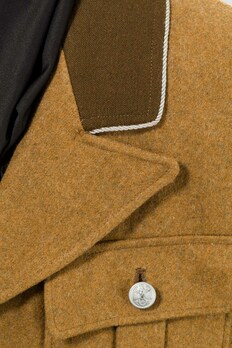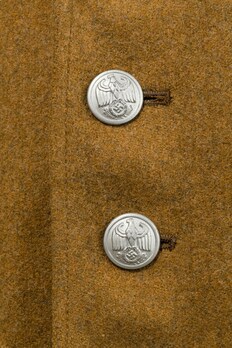RMBO Tunic (Single-breasted version)
CATEGORY: Version
SKU: 36.GOR.02.01.001.000
Estimated market value:




Estimated market value:
The Ministry for the Occupied Eastern Territories (Reichsministerium für die besetzten Ostgebiete, RMfdbO or RMBO) was established in July of 1941 to administrate the German-occupied parts of Eastern Europe, mostly Russia. It was headed by Alfred Rosenberg.
The Reich Leader Rosenberg Taskforce (Einsatzstab Reichsleiter Rosenberg, ERR), also led by Alfred Rosenberg, had already been established in July of 1940 in France. With the expansion of German-occupied territories the ERR eventually began to operate in east and southeast Europe as well. This organisation was tasked with stealing cultural artifacts.
The uniforms of the Ministry for the Occupied Eastern Territories are dark brown. The same or very similar uniforms were also worn by the members of the Einsatzstab Reichsleiter Rosenberg.
The Tunic for the members of the Ministry for the Occupied Eastern Territories was introduced on March 25, 1942. There are two main versions.
The single-breasted version has four buttons, which are either silver-coloured or gold-coloured, depending on the wearer’s rank. It has a dark brown open collar and four pockets. The two breast pockets are pleated while the hip pockets are unpleated, and both have buttoned flaps. The tunic has a slit at the back. The turned-up cuffs have silver-coloured or gold-coloured twist cord. Initially, there were plain cloth shoulder straps in the colour of the tunic, attached to a gold-coloured or silver-coloured button. These were discontinued soon after introduction.
The double-breasted version has two rows of four buttons each, either silver-coloured or gold-coloured, but the top button of each row is purely decorative. There are no breast pockets. The hip pockets are unpleated and the flaps unbuttoned. There is no slit in the rear. The turned-up cuffs have piping at the top.
The collar piping on both versions is gold-coloured twist cord for Generalkommissare and personal advisors and adjutants of the minister, and silver-coloured for deputies of Generalkommissare and upwards. Retired officials granted special permission were allowed to keep wearing their uniforms, but with dark brown piping instead.

Comments
Sign in to comment and reply.


Scroll Top